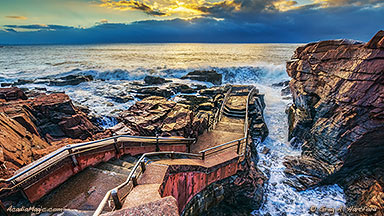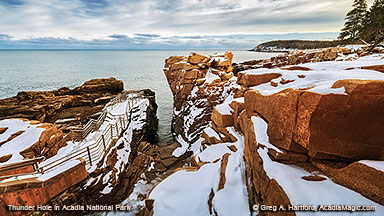Wonderful Views!
This spot provides gorgeous panoramic views of Otter Cliff on the right, Schoodic Peninsula in the far distance, and Sand Beach and Great Head to the left. Thunder Hole is a great place to stand and watch or sit and relax, taking in the spectacular sights, sounds and smells. One of the pleasant things that greets you upon arrival, depending upon the season, is the aroma of roses. Next to the steps leading to the ocean, are large groupings of wild roses or rose hips. Rose hips are a potent source of vitamin C, at least until they become dry or are processed. Note: The Island Explorer Shuttle Bus stops here about every half hour during normal seasonal daytime hours. The last bus leaves at 6:58 P.M. Check their schedule to verify.






